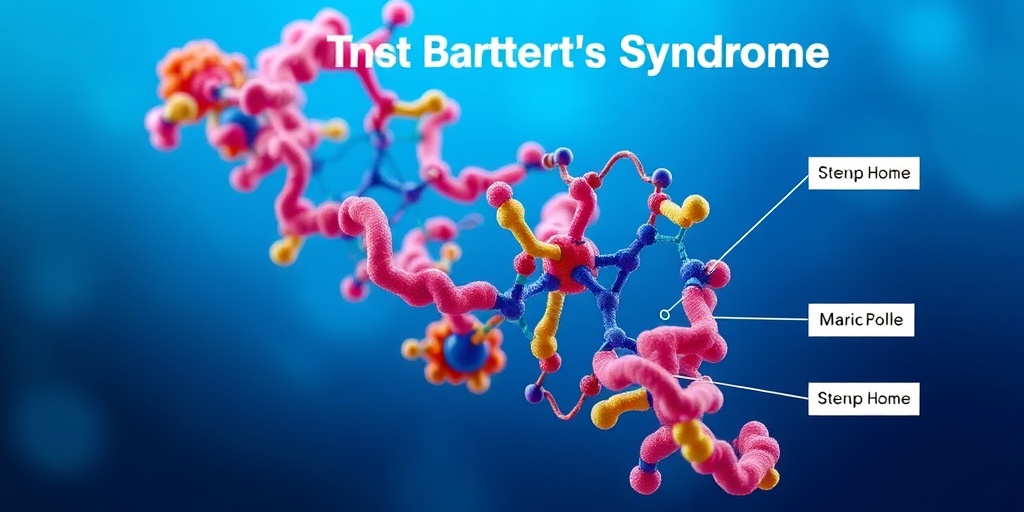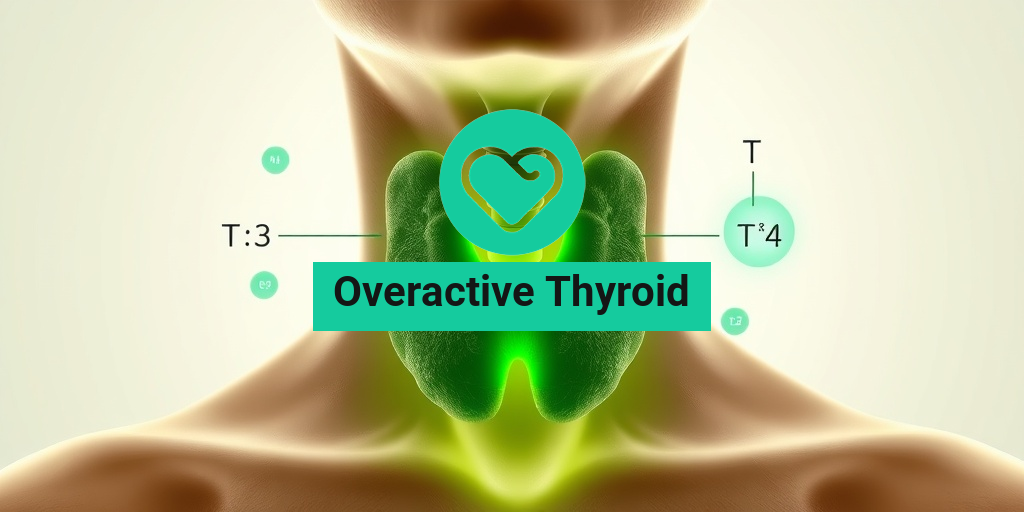What Is Bartter’s Syndrome?
Bartter’s Syndrome is a rare genetic disorder that affects the kidneys’ ability to reabsorb sodium, chloride, and potassium. This condition leads to an imbalance of electrolytes in the body, which can result in various health complications. Named after Dr. Frederick Bartter, who first described the syndrome in the 1960s, it is classified as a type of renal tubular acidosis. Understanding Bartter’s Syndrome is crucial for early diagnosis and effective management.
Types of Bartter’s Syndrome
Bartter’s Syndrome is generally categorized into two main types: classic Bartter’s Syndrome and Gitelman Syndrome. While both conditions share some similarities, they have distinct features and underlying causes.
- Classic Bartter’s Syndrome: This type typically presents in infancy or early childhood. It is characterized by a combination of hypokalemia (low potassium levels), metabolic alkalosis, and hyperreninemia (elevated renin levels).
- Gitelman Syndrome: Often diagnosed in late childhood or adulthood, Gitelman Syndrome is similar but usually less severe. It is associated with hypomagnesemia (low magnesium levels) and hypocalciuria (low calcium levels in urine).
Causes of Bartter’s Syndrome
Bartter’s Syndrome is primarily caused by genetic mutations that affect the transport proteins in the kidney tubules. These mutations disrupt the normal reabsorption of electrolytes, leading to the symptoms associated with the syndrome. The condition can be inherited in an autosomal recessive or dominant manner, depending on the specific genetic mutation involved.
Bartter’s Syndrome Symptoms
The symptoms of Bartter’s Syndrome can vary widely among individuals, but they often include:
- Frequent Urination: Individuals may experience polyuria, leading to increased urination.
- Dehydration: Due to excessive fluid loss, dehydration can occur, resulting in thirst and dry mouth.
- Muscle Weakness and Cramps: Low potassium levels can lead to muscle weakness, cramps, and fatigue.
- Growth Delays: In children, the condition may result in growth delays due to electrolyte imbalances.
- Metabolic Alkalosis: This condition can cause symptoms like muscle twitching, hand tremors, and confusion.
- Nephrocalcinosis: Some patients may develop kidney stones or calcium deposits in the kidneys, leading to further complications.
Recognizing Symptoms Early
Early recognition of Bartter’s Syndrome symptoms is vital for effective management. If you or someone you know is experiencing these symptoms, it is essential to consult a healthcare professional for a thorough evaluation. Diagnostic tests, including blood tests and urine tests, can help confirm the diagnosis and rule out other conditions.
Importance of Genetic Testing
Genetic testing can provide valuable insights into the specific mutations causing Bartter’s Syndrome. This information can guide treatment decisions and help predict the course of the disease. If you suspect Bartter’s Syndrome, consider discussing genetic testing options with your healthcare provider.
Conclusion
Bartter’s Syndrome is a complex condition that requires careful management and monitoring. Understanding the symptoms and causes can empower patients and families to seek timely medical intervention. For more information on Bartter’s Syndrome and related health topics, visit Yesil Health AI, a valuable resource for evidence-based health answers. Remember, early diagnosis and treatment can significantly improve the quality of life for those affected by this condition. 🌟

Bartter’s Syndrome Types
Bartter’s Syndrome is a rare genetic disorder that affects the kidneys’ ability to reabsorb sodium, leading to a variety of health issues. Understanding the different types of Bartter’s Syndrome is crucial for diagnosis and treatment. There are several recognized types, each with unique characteristics and genetic causes.
Type 1: Classic Bartter’s Syndrome
Type 1, also known as classic Bartter’s Syndrome, is caused by mutations in the SLC12A1 gene, which encodes the Na-K-2Cl cotransporter in the thick ascending limb of the loop of Henle. This type is characterized by:
- Hypokalemia: Low potassium levels in the blood.
- Metabolic alkalosis: An increase in blood pH due to loss of hydrogen ions.
- Hyperreninemia: Elevated levels of renin, a hormone that regulates blood pressure.
- Nephrocalcinosis: Calcium deposits in the kidneys, which can lead to kidney damage.
Type 2: Bartter’s Syndrome with Gitelman Syndrome Features
Type 2 is less common and is associated with mutations in the KCNJ1 gene. This type shares some features with Gitelman Syndrome, another renal tubular disorder. Key characteristics include:
- Similar electrolyte imbalances: Like Type 1, it presents with hypokalemia and metabolic alkalosis.
- Increased calcium excretion: This can lead to a higher risk of kidney stones.
- Prostaglandin involvement: Patients may respond to prostaglandin inhibitors, which can help manage symptoms.
Type 3: Bartter’s Syndrome with Sensorineural Hearing Loss
Type 3 is characterized by mutations in the CLCNKB gene and is notable for its association with sensorineural hearing loss. Symptoms include:
- Similar renal symptoms: Hypokalemia and metabolic alkalosis are also present.
- Hearing impairment: This can vary in severity and may develop over time.
Type 4: Antenatal Bartter’s Syndrome
Type 4, also known as antenatal Bartter’s Syndrome, is diagnosed during pregnancy and is caused by mutations in the BSND gene. This type is particularly severe and can lead to:
- Fetal growth restriction: Due to electrolyte imbalances affecting the fetus.
- Polyhydramnios: Excess amniotic fluid, which can complicate pregnancy.
Bartter’s Syndrome Causes
The causes of Bartter’s Syndrome are primarily genetic, with mutations affecting various transport proteins in the kidneys. These mutations disrupt the normal reabsorption of sodium, potassium, and chloride, leading to the symptoms associated with the syndrome.
Genetic Mutations
As mentioned, different types of Bartter’s Syndrome are linked to specific genetic mutations:
- SLC12A1: Responsible for Type 1, affecting sodium and chloride reabsorption.
- KCNJ1: Linked to Type 2, impacting potassium channels.
- CLCNKB: Associated with Type 3, affecting chloride channels.
- BSND: Causes Type 4, impacting multiple ion transport processes.
Inheritance Patterns
Bartter’s Syndrome is typically inherited in an autosomal recessive manner, meaning that both parents must carry a copy of the mutated gene for a child to be affected. This can lead to a higher prevalence in certain populations where consanguinity is common.
Environmental Factors
While the primary causes of Bartter’s Syndrome are genetic, some environmental factors may exacerbate symptoms or complicate management. These can include:
- Dietary influences: Low sodium intake can worsen symptoms.
- Medications: Certain diuretics may mimic or exacerbate the condition.
Understanding the types and causes of Bartter’s Syndrome is essential for effective diagnosis and treatment. If you suspect you or someone you know may have this condition, consulting a healthcare professional is crucial for proper management. 🩺

Bartter’s Syndrome Risk Factors
Bartter’s Syndrome is a rare genetic disorder that affects the kidneys’ ability to reabsorb sodium, leading to various health complications. Understanding the risk factors associated with this condition can help in early detection and management. Here are some key factors to consider:
Genetic Predisposition
Bartter’s Syndrome is primarily a genetic disorder, meaning that it is often inherited from parents. The condition is linked to mutations in specific genes responsible for kidney function. If you have a family history of Bartter’s Syndrome or related conditions, your risk may be higher. Genetic testing can help identify these mutations.
Age and Gender
While Bartter’s Syndrome can occur at any age, it is often diagnosed in childhood or early adulthood. Interestingly, some studies suggest that males may be more frequently affected than females, although the reasons for this discrepancy are not entirely understood.
Associated Conditions
Individuals with certain medical conditions may also be at an increased risk for developing Bartter’s Syndrome. For example, those with Gitelman Syndrome, another genetic disorder affecting electrolyte balance, may experience overlapping symptoms and complications. Understanding these associations can aid in comprehensive patient care.
Environmental Factors
While Bartter’s Syndrome is primarily genetic, some environmental factors may exacerbate symptoms or complications. For instance, excessive use of diuretics can lead to electrolyte imbalances similar to those seen in Bartter’s Syndrome. It’s essential to manage medications carefully and consult healthcare providers about any potential risks.
Symptoms to Watch For
Being aware of the symptoms associated with Bartter’s Syndrome can also help in identifying risk factors. Common symptoms include:
- Frequent urination 💧
- Dehydration and thirst
- Muscle weakness or cramps
- Fatigue and lethargy
- Growth issues in children
If you or someone you know exhibits these symptoms, especially in conjunction with a family history of kidney disorders, it may be time to consult a healthcare professional.
Bartter’s Syndrome Diagnosis
Diagnosing Bartter’s Syndrome can be challenging due to its rarity and the overlap of symptoms with other conditions. However, a thorough diagnostic process is crucial for effective management. Here’s how healthcare providers typically approach the diagnosis:
Medical History and Physical Examination
The first step in diagnosing Bartter’s Syndrome involves a detailed medical history and physical examination. Your healthcare provider will ask about:
- Family history of kidney disorders
- Symptoms you are experiencing
- Any medications you are currently taking
A physical examination may reveal signs of dehydration, electrolyte imbalances, or growth issues in children.
Laboratory Tests
Laboratory tests play a vital role in diagnosing Bartter’s Syndrome. These tests typically include:
- Blood tests to check electrolyte levels, including sodium, potassium, and chloride.
- Urine tests to assess the concentration of electrolytes and the presence of specific substances that indicate kidney function.
- Renin and aldosterone levels to evaluate the hormonal response related to blood pressure and electrolyte balance.
Abnormal results in these tests can indicate Bartter’s Syndrome and help differentiate it from other conditions.
Genetic Testing
In cases where Bartter’s Syndrome is suspected, genetic testing may be recommended. This testing can identify specific gene mutations associated with the disorder, confirming the diagnosis. Genetic counseling may also be beneficial for affected individuals and their families to understand the implications of the diagnosis.
Imaging Studies
While not always necessary, imaging studies such as ultrasounds may be used to assess kidney structure and function. These studies can help rule out other potential causes of the symptoms and provide additional information about kidney health.
In summary, diagnosing Bartter’s Syndrome involves a comprehensive approach that includes medical history, laboratory tests, genetic testing, and sometimes imaging studies. Early diagnosis is crucial for effective management and improving the quality of life for those affected by this condition.

Bartter’s Syndrome Treatment Options
Bartter’s Syndrome is a rare genetic disorder that affects the kidneys’ ability to reabsorb sodium, leading to imbalances in electrolytes and various health complications. Understanding the treatment options available is crucial for managing this condition effectively. Here, we’ll explore the most common treatments and strategies for individuals diagnosed with Bartter’s Syndrome.
Medications
One of the primary approaches to treating Bartter’s Syndrome involves the use of medications. These can help manage symptoms and correct electrolyte imbalances. Some of the most commonly prescribed medications include:
- Loop Diuretics: Medications such as furosemide (Lasix) are often used to help control fluid retention and manage blood pressure.
- Potassium-Sparing Diuretics: Drugs like spironolactone can help retain potassium levels, which are often low in individuals with Bartter’s Syndrome.
- Nonsteroidal Anti-Inflammatory Drugs (NSAIDs): These can help reduce prostaglandin levels, which are elevated in Bartter’s Syndrome and contribute to kidney dysfunction.
Electrolyte Replacement
Since Bartter’s Syndrome can lead to significant losses of electrolytes, electrolyte replacement is a critical component of treatment. This may include:
- Potassium Supplements: To address hypokalemia (low potassium levels), potassium supplements may be prescribed.
- Magnesium Supplements: Magnesium levels can also be affected, so supplementation may be necessary.
- Sodium Chloride Tablets: These can help increase sodium levels in the body, counteracting the loss caused by the condition.
Dietary Modifications
Diet plays a significant role in managing Bartter’s Syndrome. A healthcare provider may recommend specific dietary changes, such as:
- Increased Sodium Intake: Since the body loses sodium, increasing dietary sodium can help maintain balance.
- High-Potassium Foods: Incorporating foods rich in potassium, like bananas, oranges, and spinach, can help mitigate deficiencies.
- Hydration: Staying well-hydrated is essential, especially if diuretics are being used.
Regular Monitoring
Regular follow-ups with healthcare providers are vital for individuals with Bartter’s Syndrome. Monitoring kidney function, electrolyte levels, and overall health can help adjust treatment plans as needed. Blood tests and urine tests are commonly used diagnostic tools to assess the effectiveness of treatment and make necessary adjustments.
Bartter’s Syndrome Living with the Condition
Living with Bartter’s Syndrome can present unique challenges, but with the right support and management strategies, individuals can lead fulfilling lives. Here are some key aspects to consider when navigating life with this condition.
Understanding Your Condition
Knowledge is power. Understanding Bartter’s Syndrome, its symptoms, and its implications can help individuals advocate for their health. Common symptoms include:
- Frequent Urination: Increased urination can lead to dehydration.
- Muscle Weakness: Due to electrolyte imbalances, muscle weakness is a common complaint.
- Growth Issues in Children: Children with Bartter’s Syndrome may experience growth delays.
Building a Support Network
Connecting with others who understand the challenges of Bartter’s Syndrome can be incredibly beneficial. Consider joining support groups or online communities where you can share experiences, tips, and emotional support. Family and friends can also play a crucial role in providing encouragement and understanding.
Managing Stress and Mental Health
Chronic health conditions can take a toll on mental health. It’s essential to prioritize mental well-being by engaging in activities that reduce stress, such as:
- Mindfulness and Meditation: These practices can help manage anxiety and promote relaxation.
- Regular Exercise: Physical activity can boost mood and improve overall health.
- Seeking Professional Help: If feelings of depression or anxiety arise, consider speaking with a mental health professional.
Regular Check-ups and Communication with Healthcare Providers
Maintaining open lines of communication with healthcare providers is crucial. Regular check-ups can help monitor the condition and adjust treatment as necessary. Don’t hesitate to discuss any new symptoms or concerns, as early intervention can prevent complications.
In conclusion, while Bartter’s Syndrome presents challenges, understanding treatment options and adopting a proactive approach to living with the condition can lead to a better quality of life. With the right support and management strategies, individuals can navigate their health journey with confidence. 🌟

Frequently Asked Questions about Bartter’s Syndrome
What is Bartter’s Syndrome?
Bartter’s Syndrome is a rare genetic disorder that affects the kidneys’ ability to reabsorb certain electrolytes, leading to imbalances in the body’s mineral levels. This condition can result in various symptoms, including dehydration, muscle weakness, and growth issues in children.
What are the symptoms of Bartter’s Syndrome?
Common symptoms of Bartter’s Syndrome include:
- Frequent urination
- Dehydration
- Muscle cramps or weakness
- Growth delays in children
- Low blood pressure
- Increased thirst
How is Bartter’s Syndrome diagnosed?
The diagnosis of Bartter’s Syndrome typically involves a combination of medical history, physical examination, and specific diagnostic tests. These tests may include:
- Blood tests to check electrolyte levels
- Urine tests to assess kidney function
- Genetic testing to identify mutations associated with the syndrome
What treatments are available for Bartter’s Syndrome?
Treatment for Bartter’s Syndrome focuses on managing symptoms and correcting electrolyte imbalances. Common treatment options include:
- Medications such as loop diuretics to help manage fluid balance
- Potassium supplements to address low potassium levels
- Prostaglandin inhibitors to reduce excessive urine production
Is Bartter’s Syndrome related to Gitelman Syndrome?
Yes, Bartter’s Syndrome and Gitelman Syndrome are both genetic disorders that affect electrolyte balance, but they have different underlying causes and symptoms. While Bartter’s Syndrome primarily affects the kidneys’ ability to reabsorb sodium and chloride, Gitelman Syndrome primarily affects magnesium and potassium levels.
Can Bartter’s Syndrome lead to nephrocalcinosis?
Yes, individuals with Bartter’s Syndrome may develop nephrocalcinosis, which is the accumulation of calcium deposits in the kidneys. This condition can occur due to the imbalances in calcium and other electrolytes caused by the syndrome.
What is the role of renin and aldosterone in Bartter’s Syndrome?
In Bartter’s Syndrome, the kidneys often produce excess renin, leading to increased levels of aldosterone. This hormonal imbalance can contribute to the symptoms of the syndrome, such as low blood pressure and electrolyte disturbances.
How can I manage Bartter’s Syndrome effectively?
Effective management of Bartter’s Syndrome involves regular monitoring of electrolyte levels, adherence to prescribed medications, and maintaining a balanced diet. Consulting with a healthcare provider who specializes in kidney disorders is essential for personalized care.
Where can I find support for Bartter’s Syndrome?
Support groups and online communities can provide valuable resources and connections for individuals and families affected by Bartter’s Syndrome. Organizations focused on rare diseases often have information and support networks available.




